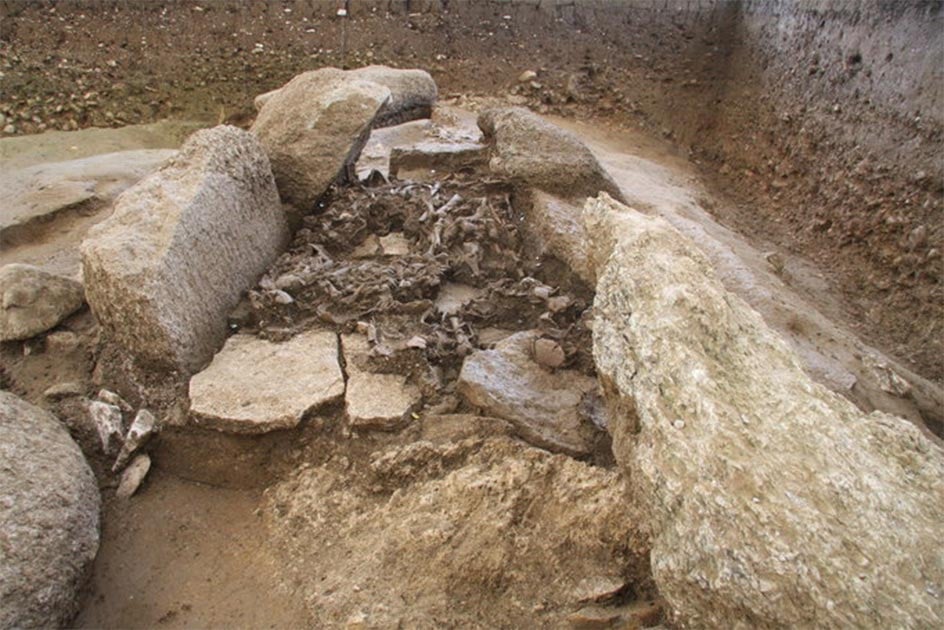Neolithic DNA Reveals Surprising Truth of the Yamnaya Culture in Europe
Genetic research has revolutionized our understanding of Switzerland’s prehistoric past. A group of researchers have carried out a study of genomes from individuals who lived in the Late Neolithic era. They found that a larger group of immigrants from the Pontic Steppe changed the genetic make-up of the area. However, this change was gradual, and it appears that older populations did not mix with the newcomers for many centuries in prehistoric Switzerland and adjacent regions.
It has long been known that pastoralists, belonging to the Yamnaya Culture from the Pontic Steppe region, in what is now Ukraine and southern Russia, changed the population of Central Europe in the Late Neolithic period.
Evidence of this has been provided in studies of the genome and “the emergence of the Central and Eastern European Corded Ware Complex” in archaeological records, reports Nature Communications. Yet there are many questions about this period. Heritage Daily reports that “exactly when these new peoples arrived and how they mixed with indigenous Europeans remains unclear.”
Stone Age Genetics
To solve this mystery a multinational team of researchers from world-famous universities, such as the University of Tübingen, the University of Bern, and the Max Planck Institute, collaborated on a project to sequence the genome of a sample of Neolithic individuals.
After preliminary contamination tests, a sample of 96 individuals from the Late Stone Age was examined. They came from “13 Neolithic and Early Bronze Age sites in Switzerland, southern Germany and the Alsace region of France,” reports the Max Planck Institute.

Remains found at an excavation site used in the study, which has revealed clues to the Yamnaya Culture’s migration to Europe. (Marianne Ramstein / Archäologischer Dienst des Kanton Bern)
The specimens were first cleaned in a laboratory using UV light. Then material was taken from the teeth and petrous bone of the samples and dissolved in a liquid. This allowed for the genomes to be sequenced. Data from the sequencing processes were further analyzed using a number of software packages.
These results were then cross-referenced with “399 published ancient genomes from the same period from Central and Western Europe as well as Neolithic individuals from Anatolia and the Pontic steppe,” the researchers wrote in Nature Communications.
No Sudden Mix With the Migrants
Based on their analysis of changes in the genome, they were able to identify when the new Yamnaya Culture immigrants from the Pontic-Caspian Steppe changed the profile of the European population. The researchers state in Nature Communications that they detected “an arrival of ancestry related to Late Neolithic pastoralists from the Pontic-Caspian Steppe in Switzerland as early as 2860–2460 BC.”
These results are even earlier than in other parts of Europe, including Britain, Germany and Iberia. This could allow experts to understand the nature of the migration from the steppes that changed the demography of Europe in the Stone Age.

Representation of a Yamnaya Culture horse rider. The peoples came to Europe from modern-day western Russia or the Ukraine. (katiekk2 / Adobe stock)
The study found there was no sudden admixture of the pre-existing groups and those from the Pontic-Steppe. Anja Furtwängler of the University of Tübingen’s told Heritage Daily that “remarkably, we identified several female individuals without any detectable steppe-related ancestry up to 1000 years after this ancestry arrived in the region.” This meant that the two groups did not merge over a space of years, which also indicates something about their society. The Max Planck Institute reports that this “suggests that genetic dispersal was a complex process, involving the gradual mixture of parallel, highly genetically structured societies.”
Based on their study, the researchers believe they have shown that the group from the Pontic Steppe “was a relatively homogenous population that occupied large parts of Central Europe in the Early Bronze Age,” reports Heritage Daily.
While members of the older population, who were descended from hunter-gatherers continued to exist also in the region and remained a distinct genetic group. Groups with Pontic-Steppe ancestry probably lived in the low-lands along lakes and rivers, while the older population lived in the mountains.
- New studies reveal 20 Percent of Neanderthal genome lives on in modern humans
- Details of First Historically Recorded Plague Pandemic Revealed by Ancient Genomes
- Europeans share more language and genes with Asia than previously thought
A Window into Yamnaya Culture’s Migration to Europe
These findings, as well as an analysis of the females isotopes, indicate that Late Neolithic society was “probably patrilocal,” according to Nature Communications. This is one where males stayed local all their lives and married women from some distance away. The fact that females had no ancestry from the immigrants from the Pontic-Steppe, suggests that there were “parallel societies living close to each other,” reports Nature Communications.
The genetic sequencing of individuals is changing how we view the genetic turnover of the Late Neolithic period. It suggests that older groups continued without much admixture with the new groups and lived in parallel societies for centuries. Thanks to the sequencing of the genomes, we are better able to understand prehistoric Europe.
Top image: Top view of the Dolmen of Oberbipp in Switzerland, one of the largest burial sites in the study, where Neolithic remains were studied, revealing clues to the Yamnaya Culture’s migration to Europe. Source: Urs Dardel / Archäologischer Dienst des Kanton Bern
By Ed Whelan




















Comments
The Dark Ages Germanic invasion of Britain is looking increasingly like a climate catastrophe refugee migration (albeit well-armed) into an area that may have been partially depopulated by an epidemic.
Are there elements of the same in Yamnaya movememt?